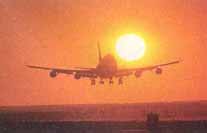
|
Origin-Destination Fleeting
Traditional fleet assignment models consider flight leg profitability estimates. Such estimates usually
account for the prorated passenger traffic that travel on more that one flight, based on some criterion
such as the distance or the flight time. Often, in a complex, large operational network that has many
connecting passengers, such prorating of passenger revenues for profitability calculations create inaccuracies.
On the other hand, the state-of-the-art revenue management decision-support systems have the capability of
explicitly considering the Origin-Destination (O&D) itineraries. To bridge the gap between the approaches
used in the traditional fleet assignment and the leading-edge revenue management, the O&D itineraries and the
corresponding fare classes need to be embedded into the fleeting decisions. Such integration captures more
accurately the profitability, and in turn yields superior fleeting decisions. Preliminary results show
that profitability increases by as much as 5% by using O&D fleeting.


|
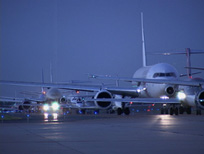
|
Combined Cargo/Passenger Revenue Management and Fleeting
Passengers have always been the predominant source of revenues for commercial air carriers that are not all-cargo airlines.
For combination airlines, i.e., those that carry both passengers and cargo, typically cargo represents ten to twenty percent
of the total revenues. Only few carriers have this percentage around thirty. In a distressed passenger demand environment,
more emphasis on cargo can lead to additional revenues. There exists untapped revenue potential for combination carriers by
simply better balancing the passenger and cargo priorities. Making strategic and operational decisions based on the passenger
and cargo mix boosts the overall revenues. Traditionally, fleeting decisions consider only passenger profitability while
invariably ignoring the cargo component. The same holds for revenue management practices, which control seat inventory and
cargo space disjointedly. An integrated approach considers both passenger and cargo traffics for assigning equipment types
and managing revenues.


|
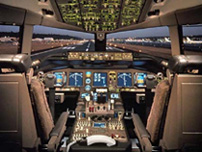
|
Crew Training Scheduling
Flight crew (also cabin crew) must go through periodic training -- initial, equipment change, and recurrent -- to maintain
qualification and currency. Training typically consists of classroom instructions and simulation time. Scheduling training
activities is a daunting task due to various regulatory rules, collective-bargaining restrictions, and limited resources.
In addition, there are several objectives such as minimizing the schedule cost (each schedule represents a different cost),
minimizing crew conflicts (e.g., vacations), and minimizing operational interruptions (uncovered trips). Due to the complexity
of the scheduling problem, a manual, even a semi-manual, process not only can be extremely tedious but also most likely
leads to a costly schedule. A state-of-the-art decision-support system that uses advanced analytical optimization techniques
significantly reduces the incurred costs and eliminates the excess burden on schedulers.


|
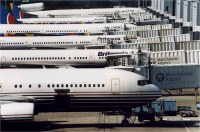
|
Integrating Crew and Maintenance Routing Decisions
It is customary to make aircraft routing decisions that accounts for maintenance requirements before the crew pairing assignment.
This ignores the interaction between the two problems. For example, the allowable connect time is shorter if the crew stays on
the same aircraft than the standard requirement. As such, producing different aircraft maintenance routes that explicitly
incorporates both costs simultaneously can reduce the crew pairing cost. We conducted a pilot study at United Airlines, and
were able to reduce the crew pairing cost by as much as twenty-five percent. Thus, an integrated approach to crew and maintenance
routing decisions can substantially reduce the overall costs.


|
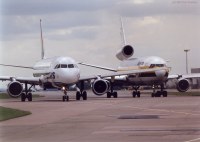
|
Dynamic Route Network
As a result of recent significant changes in the pattern of traffic, many airlines worldwide are experiencing fluctuating demands
and greater passenger volume variability. As a result, airlines constantly have to adjust the flight schedule. Now, schedule tuning
occurs frequently and repeatedly, which necessitates having appropriate analytical tools to change the capacity in different segments
of the flight schedule. While in the past the need for such adjustments occurred with a pace that allowed manual alterations, now this
decision-making process must be automated. In addition, due to the drastic nature of recent events using historical trends is not practical
and therefore the need for better analytical tools is essential. A decision-support system provides a methodical way to make least-cost
schedule changes efficiently. It can quickly analyze many different options and possibilities, and produce the best alternative. As such,
it is an indispensable tool to facilitate route design and to make better decisions.


|

|
Fleeting and Aircraft Routing with Demand Driven Dispatch
The demand variability -- planned versus actual -- decreases as the flight departure time nears. This creates an opportunity for airlines to match the capacity with the
actual demand by dynamically swapping equipment types as additional demand information becomes available, due to the stabilized demand that is already realized.
This concept is known as Demand Driven Dispatch (D^3). The benefits of D^3 depend on the frequency of swapping opportunities. Once the fleet assignment and
aircraft routing capture equipment-type swapping opportunities, then dynamic redeployments will be practical through applying D^3, resulting in a superior match of
capacity and demand. Considering that a single swap results in large savings, such robust dynamic reassignments of flight equipment yield substantial benefits.


|
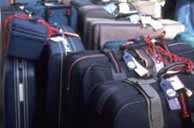
|
RDIF Technology for Airline Baggage Handling
Mishandled checked baggage is one of the most problematic areas for airlines, particularly during irregular operations.
Losing and mishandling baggage not only creates direct expenses in terms of tracking and rerouting those items, as well
as compensating passengers, but it also leads to dissatisfied customers, loss of passenger goodwill, and filed complaints
with the regulatory authorities. Emerging new technologies based on Radio Frequency Identification (RFID) can
significantly decrease the possibility of mishandling baggage. In addition, once mishandling occurs, the best way to remedy
the situation for getting the baggage to its proper destination is identified via RFID decision-support tools. Once RFID tags
are installed on bags, they will provide for systematic, easy, and real-time tracking of baggage on the ground and in the air.
Introducing this relatively new technology obviously requires careful, detailed assessment and analysis to determine the costs
and identify the benefits, including increased security. In addition, decision-support systems need to be developed
around the RFID technology so that maximum benefits of implementing such a technology for baggage handling can be realized
by the airline in terms of decision automation.


|









